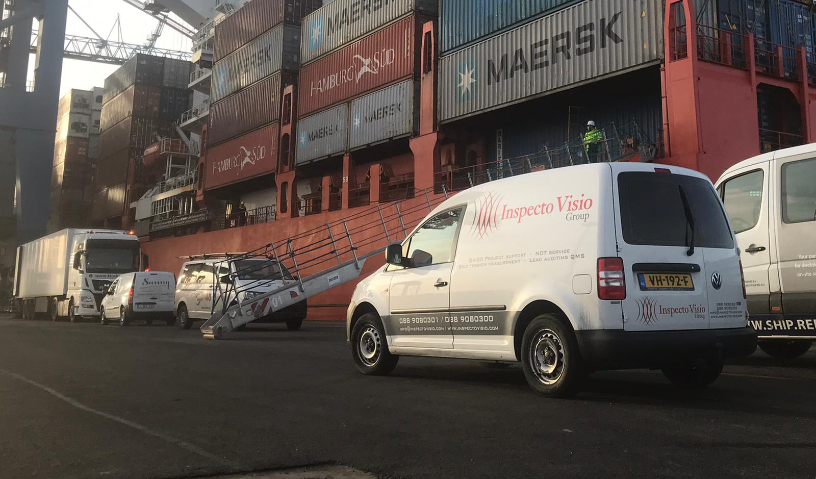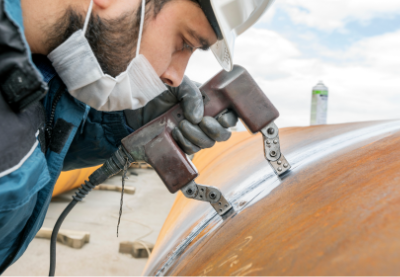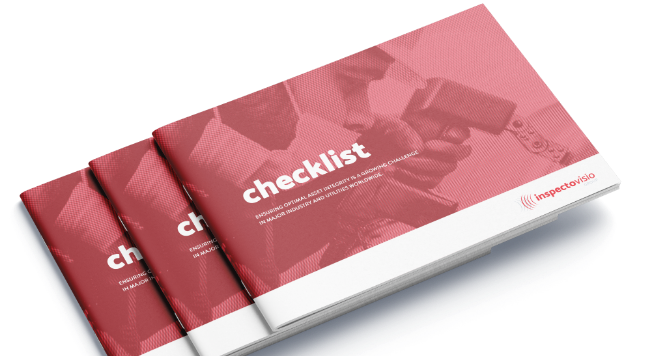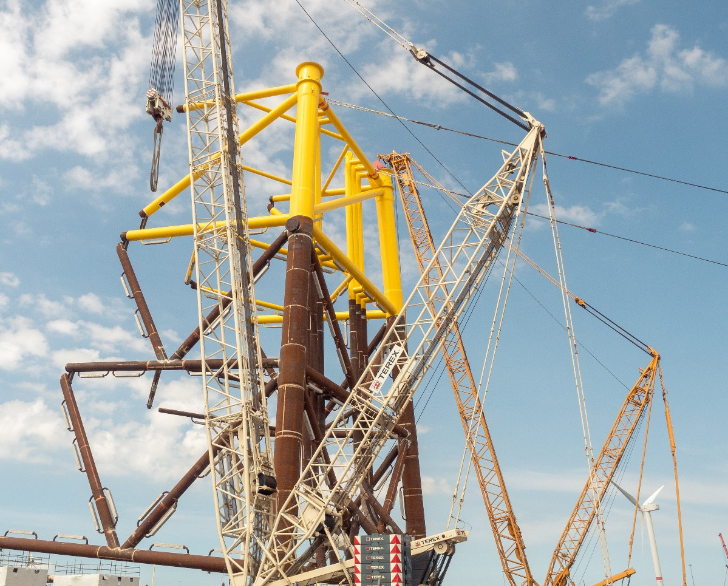Hier een
goede kop
Eventueel nog een ondertitel
Materiaalcontrole met geluid waardoor onzichtbare schade wordt opgespoord
Lorem ipsum dolor sit amet, consectetur adipiscing elit. Proin non porta est, sed tincidunt mauris. Etiam eu sapien magna. Quisque ornare arcu ut purus maximus ultrices. Duis bibendum tincidunt scelerisque. Fusce nunc nibh, consequat a dapibus eu, vestibulum blandit dolor. Donec aliquet mauris quis risus tincidunt, vehicula maximus ex maximus. Duis ut imperdiet odio. Cras sed enim sed sem ornare lobortis tincidunt sed odio. Maecenas malesuada, ex et pulvinar tristique, enim risus posuere tellus, ut tincidunt ex nulla et mi. Etiam bibendum pharetra eleifend.

Blok/titel met een CTA
Voordelen van Ultrasoon Onderzoek:
- Lorem ipsum dolor sit amet, consectetur adipiscing elit.
- Nunc nec pellentesque elit, vel tincidunt ipsum.
- Duis consectetur, mi eget posuere sagittis, neque tellus volutpat libero.
- Ut in vestibulum leo, ut pellentesque justo. Cras vitae nunc dolor.
Wanneer kan Ultrasoon Onderzoek worden uitgevoerd?
Curabitur odio nisl, egestas eget sagittis consequat, porttitor eu tortor. Etiam et molestie sapien. Quisque auctor in erat eget volutpat. Sed efficitur nisi ut erat fringilla convallis. Praesent vehicula, justo quis ultricies cursus, lorem metus commodo velit, a tincidunt diam urna sed ante. Fusce a blandit sapien. In magna erat, malesuada non turpis nec, faucibus euismod lacus.
Wat zijn de User Benefits?
- Nam maximus luctus pharetra. Cras in nisl porta, tristique tellus faucibus, dignissim ante.
- Ut egestas, sem at viverra tempus, magna lectus gravida magna, non vulputas nulla vitae purus.
Frequently asked questions about XRF analyse
-
Welke materialen kunnen worden onderzocht met radiografie?
Radiografisch onderzoek is geschikt voor een breed scala aan materialen, waaronder staal, rvs, aluminium, koper, exotisch materiaal en kunststoffen.
-
Is radiografisch onderzoek veilig?
Ja, radiografisch onderzoek is veilig wanneer uitgevoerd door gecertificeerde specialisten zoals die van NDO Nederland. Wij werken volgens strikte veiligheidsprotocollen om de blootstelling aan ioniserende straling tot een minimum te beperken. Onze radiografen zijn opgeleid om verantwoord met straling te werken volgens de strengste veiligheidsnormen, zodat u zich geen zorgen hoeft te maken over uw veiligheid tijdens het inspectieproces.
-
Wat is radiografisch onderzoek?
Radiografisch onderzoek is een niet-destructieve testmethode die defecten in metalen en andere materialen zichtbaar maakt door middel van straling. Dit zorgt ervoor dat u de kwaliteit van uw materialen kunt controleren zonder het object te beschadigen, wat kosten en uitvaltijd voorkomt. Of het nu gaat om lasnaden in bruggen of componenten in de scheepsbouw, met radiografie krijgt u een duidelijk beeld van de binnenkant van uw (gelaste) materiaal.
-
Is XRF-analyse also possible on-site?
Yes, it is. We have mobile equipment, allowing 4 hours of non-stop cordless testing. If a 220 V power supply is available, there obviously is no time limit.
-
Which elements can be detected through XRF-analyse?
XRF analyse can be used to identify a wide range of alloy elements such as nickel, chrome, cobalt, coper, titanium and led. In addition, light elements such as magnesium, aluminium, silicon, phosphor and sulphur can also be identified.
-
Can I get a material certificate after an XRF analysis?
No, but we do provide a report consisting of all detected elements following each XRF-analyse.
-
Is XRF-analyse also suitable for tiny samples?
Yes, XRF analyse is also very accurate for analysing tiny samples and irregular surfaces such as chips, wires and welding joint, etc.
-
Is possible to identify heavy metals in rubber, plastic, wood or composite?
Yes, our XRF-analyse can identify heavy metals in in light matrices, such as rubber, plastic, wood or composite. It’s also suitable for screening consumer goods – such as toys and building materials – for chrome, led, cadmium and arsenic.
-
Does XRF-analyse involve the use of helium or a vacuum pomp?
No, even without helium or a vacuum pomp the measurements prove to be highly accurate.
-
Is it possible to detect an incorrectly used welding wire?
Yes, it is. XRF-analyse easily detects the composition of a welding seam and thus also that of the used wielding wire.
-
Does eddy current testing detect everything?
No, unfortunately it does not. The indication of a rupture is indeed directly visible, but otherwise we can only detect disturbances which are possibly caused by defects.
-
Can carbon steel also be inspected via eddy current testing?
Yes, up to 6 millimetres deep.
-
Does a coating have to be removed in case of a defect indication?
This is often desirable in view of follow-up testing.
-
Does NDO Nederland conduct visual testing in pipelines with a video scope?
Yes, we do. However, we would like to receive a drawing beforehand in order to select the necessary tools.
-
Do you offer an inspection report after the test?
Yes, we always do. Our motto is: no report, no inspection.
-
Does NDO Nederland also examine construction damages?
After a first visual inspection, we will explore possible follow-up steps with you as well as any necessary additional testing and methods.
-
Is it possible to conduct ultrasonic testing on hot surfaces?
Yes, there are several options to this purpose.
-
Does NDO Nederland conduct plate lamination testing?
Yes, ultrasonic testing is quite suitable for this.
-
I need ultrasonic testing regarding an unusual situation. Does NDO Nederland offer customised ultrasonic testing?
Certainly, we always like a challenge. We find solutions for the most diverse situations.
-
Can NDO Nederland measure the thickness of a coated tank?
Yes, that’s no problem.
-
WHAT TYPES OF HARDNESS TESTING DOES NDO NEDERLAND USE?
We gebruiken de Equotip-methode, die de hardheid meet op basis van een elektronische analyse van impact- en terugveersnelheid. De eenheden Vickers, Rockwell en Brinell passen we veel toe.
-
IS HARDNESS TESTING POSSIBLE ON COATED STEEL?
No, in that case we would be testing the hardness of the coating. It is therefore important to conduct Hardness Testing early, before any coating is applied.
-
CAN YOU ALSO TEST GALVANISED BOLTS?
Yes we can, we are able to filter the zinc layer out of our measurements.
-
DO WE HAVE ACCESS TO ALL MEASURED DATA?
Of course, we offer a report with the measurement data.
-
IS YOUR TYPE OF TESTING ALSO SUITABLE FOR DYNAMICALLY LOADED JOINTS?
Yes, this is no problem.
-
ARE YOU ABLE TO TEST BOLT JOINTS IF GASKETS ARE USED?
In most cases we can.
-
IS IT NECESSARY TO ADJUST BOLTS?
It hardly proves ever to be necessary.
-
CAN ROUGHNESS TESTING BE CONDUCTED ON WET SURFACES?
No, for reliable results the test surface needs to be dry.
-
DOES A SURFACE NEED TO BE PRE-TREATED PRIOR TO ROUGHNESS TESTING?
We recommend conducting Roughness Testing on surfaces in the condition they ultimately will be applied in the production process. If this involves a pre-treated surface, it is also best to test it in its pre-treated condition. This is obviously not the case when it is tested as a guarantee for its pre-coating roughness.
-
WHICH LIQUID PENETRANT TESTING METHODS DO YOU APPLY?
We use two different methods involving either a colour-contrasting liquid or one that glows up under UV-light. Mostly the penetrant washes off with just water, yet we sometimes also apply a chemical solution. Both options are offered for you to choose.
-
IS LIQUID PENETRANT TESTING POSSIBLE UNDER COLD CIRCUMSTANCE?
Yes, because we then switch over to another method, which is suitable to use in circumstances way beyond freezing point.
-
CAN LIQUID PENETRANT TESTING BE USED FOR FOOD PRODUCTION?
Yes it can, we apply another method and liquid, thus guaranteeing food safety requirements.
-
IS LIQUID PENETRANT TESTING POSSIBLE ON HOT SURFACES?
It is possible to a certain degree. Please let us know which temperature you are referring to, then we can determine which method is suitable.
-
CAN HARDNESS TESTING BE CONDUCTED IN THE RAIN AS WELL?
Yes it can, we have found a suitable solution for this.
-
CAN OXILYSER TESTING ALWAYS BE CONDUCTED?
Yes, as long as the materials are stainless steel.
-
Does Oxylyser Testing cause surface damage?
No, it leaves no traces.
-
DOES TESTING REDUCE CORROSION RESISTANCE?
No, as long as it is done properly.
-
WHEN TESTED PASSIVE, CAN A MATERIAL STILL CORRODE?
Only when it isn’t applied properly.
-
IS ON-SITE OES TESTING AN OPTION?
Yes, it is. We have mobile equipment, allowing 4 hours of non-stop cordless testing. If a 220 V power supply is available, there obviously is no time limit.
-
CAN I GET A MATERIAL CERTIFICATE AFTER OES TESTING?
No, but we do provide a report consisting of all detected elements following each OES-analyse
-
IS IT POSSIBLE TO DETERMINE THE CARBON EQUIVALENT THROUGH OES TESTING?
Yes it is. We quantify all elements missing on the material certificate, thus allowing the carbon equivalent to be calculated.
-
CAN EXTRA ELEMENTS BE QUATIFIED OR ONLY A STANDARD SELECTION?
We can test for a whole range of elements and gladly offer customised solutions if necessary.
-
How does Magnetic Testing work?
In order to detect a defect, we use dry magnetic particles or a solution with oil or water in a contrasting colour. After magnetising the test object, we can precisely tell where a defect is. We can also use particles that re-emit UV light, allowing us to detect defects as small as 0.4 millimetres.
-
WHICH KIND OF METHODS DO YOU APPLY FOR MAGNETIC TESTING?
Magnetisch onderzoek wordt vooral uitgevoerd met wisselspanning. Op aanvraag voeren we het onderzoek ook uit met gelijkspanning. Dat doen we om dieper gelegen defecten op te sporen. Daarnaast kunnen we ook gebruik maken van olie of water in contrastkleur én uv-licht.
-
IS MAGNETIC TESTING POSSIBLE ON COATED MATERIALS?
The best results are realised with uncoated materials. In some cases the coating doesn’t have to be removed however.
-
IS SERIAL MAGNETIC TESTING ALSO AN OPTION?
It certainly is, we have specific magnetic tape at our disposal for this purpose.
-
CAN MAGNETIC TESTING ALSO BE CONDUCTED ON WARM SURFACES?
Yes, that’s possible. We have special products which allow this kind of testing.
-
HOW LONG DOES HARDNESS TESTING TAKE?
In most cases we can offer a hardness indication within 2 hours, thus reducing delay to a minimum.
-
DOES HARDNESS TESTING LEAVE ANY TRACES?
Some methods damage the measuring surface, others do not. Unfortunately each method does not suit all situations, as a result of which slight damage cannot always be avoided. We always consider your wishes in our advice.
-
Hoe zit het met?
Dit is een faketekst. Alles wat hier staat is slechts om een indruk te geven van het grafische effect van tekst op deze plek. Wat u hier leest is een voorbeeldtekst. Deze wordt later vervangen door de uiteindelijke tekst, die nu nog niet bekend is. De faketekst is dus een tekst die eigenlijk nergens over gaat. Het grappige is, dat mensen deze toch vaak lezen. Zelfs als men weet dat het om een faketekst gaat, lezen ze toch door.

PERSONAL ADVICE
Naam + achternaam
Functie omschrijving
info@inspectovisio.com
Hier komt een
passende titel
En hier nog een aanmodigende tekst
More interesting NDT methods
Reduce repair costs and avoid late delivery

